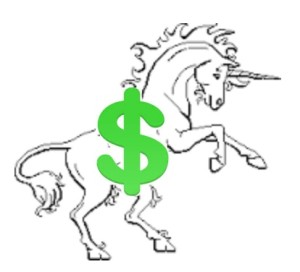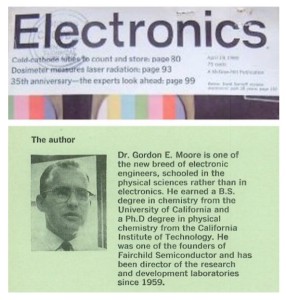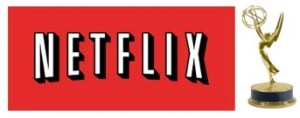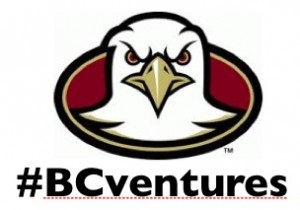
IoT Intruders, Unicorns, Moore’s Wall, Netflix Growth, #BCventures: The Week in Geek™ – April 18, 2015
‘Internet of Things’ Carries Privacy Risks
 A Cincinnati couple reported their baby’s webcam was hacked after they raced into their child’s room to follow the voice of a creepy dude screaming ‘wake up, baby’. The camera then swiveled to point at the couple while the cyber-intruder shouted obscenities at them. Shudder.
A Cincinnati couple reported their baby’s webcam was hacked after they raced into their child’s room to follow the voice of a creepy dude screaming ‘wake up, baby’. The camera then swiveled to point at the couple while the cyber-intruder shouted obscenities at them. Shudder.
Security for the Internet of Things (IoT), devices with computing smarts, is getting better, but each connected device is a potential path for attack. A recent report showed several major manufacturers that could allow hackers to detect when garage doors were opened, allow for the listening and recording of in-home conversations, and potentially gain control of locks or other devices connected to a smart hub. A reminder to be vigilant with product choices, configuration, and setup.
What Did Billion Dollar Companies Look Like at Series A?
 A recent BC on-campus talk by Google Marketing Director, BC alum Marvin Chow pointed students to this great article in Medium. Many of the “Unicorns” (current tech industry term for “startups” valued at $1B+) sported many of the same characteristics: Easy-to-dismiss ideas (rent space in your home to strangers, hotel style?), Competitive markets (who’d use SnapChat & WhatsApp when we have Facebook & SMS?), Reinventing existing consumer behavior (pie-growing Uber makes many drop car ownership, car rental, and public transit), Untested founders (know the world’s youngest self-made billionaire? It’s Stanford dropout Elizabeth Holms of med testing firm Theranos!). And Zero monetization (Twitter, Pinterest, WhatsApp, Instagram, Waze, among many others).
A recent BC on-campus talk by Google Marketing Director, BC alum Marvin Chow pointed students to this great article in Medium. Many of the “Unicorns” (current tech industry term for “startups” valued at $1B+) sported many of the same characteristics: Easy-to-dismiss ideas (rent space in your home to strangers, hotel style?), Competitive markets (who’d use SnapChat & WhatsApp when we have Facebook & SMS?), Reinventing existing consumer behavior (pie-growing Uber makes many drop car ownership, car rental, and public transit), Untested founders (know the world’s youngest self-made billionaire? It’s Stanford dropout Elizabeth Holms of med testing firm Theranos!). And Zero monetization (Twitter, Pinterest, WhatsApp, Instagram, Waze, among many others).
The “Unicorn” term was coined by Aileen Lee, founder of Cowboy Ventures. Lee’s original post had 39 Unicorns identified over the past decade, but Fortune has a list of over 80 current firms fitting the “unicorn” criteria. Be cautious. Fab had raised over $300M and was thought by many to be worth over $1B. Today the firm’s on the edge of dissolution. Real value and crystal-ball prospects aren’t the same thing. By the way, those looking to refine their ‘Valley Speak” might hear Decacorns (firms valued at $10B pre-exit) and “Dragons” referred to as those firms that return an entire fund at exit.

Moore’s Law Hits 50 but May Not Make 60
 In 1965, roughly three years before launching what would become Intel Corporation, Gordon Moore wrote a 4 page paper in Electronics Magazine, noting that microprocessors, the calculating brain of computers, get faster and cheaper – roughly doubling in speed or halving in cost every two years (subsequent managerial definitions estimate 18 months). This principle, which has become known as “Moore’s Law” works because each new generation packs transistors into increasingly smaller spaces. Moore’s Law is simply the result of persistent advancement in the equipment used to manufacture chips, and early observations have held roughly true for half a century. But at some point Moore’s Law will run into the unyielding hand of God (Moore’s Wall) – there is a point at which transistors can’t be made any smaller. We’re getting close. In Q1 ‘15, more than half of the Intel chips sold used 14-nanometer manufacturing process, the generation following 22-nanometer tech. For reference, 14 nanometers is smaller than a typical virus cell, and about as thick as the outer cell wall of a germ. Intel officials think they’ve got two more generations of shrinkage with current technologies, but beyond that, no one is committing. What will the world be like when our devices don’t get faster and cheaper? Will more computing power shift to cloud-based distributed computing? And will this expedite the need for higher-bandwidth?
In 1965, roughly three years before launching what would become Intel Corporation, Gordon Moore wrote a 4 page paper in Electronics Magazine, noting that microprocessors, the calculating brain of computers, get faster and cheaper – roughly doubling in speed or halving in cost every two years (subsequent managerial definitions estimate 18 months). This principle, which has become known as “Moore’s Law” works because each new generation packs transistors into increasingly smaller spaces. Moore’s Law is simply the result of persistent advancement in the equipment used to manufacture chips, and early observations have held roughly true for half a century. But at some point Moore’s Law will run into the unyielding hand of God (Moore’s Wall) – there is a point at which transistors can’t be made any smaller. We’re getting close. In Q1 ‘15, more than half of the Intel chips sold used 14-nanometer manufacturing process, the generation following 22-nanometer tech. For reference, 14 nanometers is smaller than a typical virus cell, and about as thick as the outer cell wall of a germ. Intel officials think they’ve got two more generations of shrinkage with current technologies, but beyond that, no one is committing. What will the world be like when our devices don’t get faster and cheaper? Will more computing power shift to cloud-based distributed computing? And will this expedite the need for higher-bandwidth?
Replacing Silicon with new materials (including germanium and graphene) may help. Lab work from an Aussie team showed a single-atom transistor. Diamonds and quantum computing are among many lab-based tech that also show promise, although proof of commercialization is no where in sight. Intel is clearly looking to the future. The firm spent $11.5 billion on R&D last year and another $10 billion on capital expenditures. And while Intel makes mostly their own chips, the number of leading chip manufacturers cranking out brains for smartphones, tablets, and other devices has shrunk from 18 a decade ago, to only four today: Intel, Samsung, GlobalFoundries, and TSMC (Taiwan Semiconductor Manufacturing Corp). Bonus: The end of the article above includes video of Moore discussing his paper and technology advancement.
Netflix Subscriber Numbers Soar
 A short note for those using the Netflix chapter in our textbook. Netflix stock is once again in nosebleed territory. So much for the enduring punishment of Qwikster. While a foreign exchange hit hurt the firm last quarter, if currencies hadn’t quirked earnings, Netflix would have crushed expectations. The firm now has over 41 million US subscribers and about 21 million in the rest of the world. Hello, Cuba!
A short note for those using the Netflix chapter in our textbook. Netflix stock is once again in nosebleed territory. So much for the enduring punishment of Qwikster. While a foreign exchange hit hurt the firm last quarter, if currencies hadn’t quirked earnings, Netflix would have crushed expectations. The firm now has over 41 million US subscribers and about 21 million in the rest of the world. Hello, Cuba!
❖ ❖ ❖ ❖
 And more great #BCventures news from our students, alumni, and faculty!
And more great #BCventures news from our students, alumni, and faculty!
- BCVC Winners: Congratulations to the winners of the 9th annual Boston College Venture Competition. 1st place was won by CoReHub – a commercial real-estate marketplace. 2nd place was taken by Helpers, an online tutoring marketplace. And 3rd place was 1950 collective – a fan apparel site for popular bands. Additional coverage by Bostinno. BCVC has created a finalist participant page for those seeking more info on teams and founders. Past members have gone on to Y-combinator, TechStars, MassChallenge, they’ve raised millions, and have gained significant customer traction. We expect big this from this year’s participants!
- BCVC SEED (Social Entrepreneurship) also held their finals, recently. Winners were: 1st Place Include-Play-Learn – a program and facility empowering children with disabilities in Ghana. BC Gabelli Presidential Scholar Daniel Lundberg has been on leave in Ghana this past year launching the GhanaStrong foundation to advance these goals. 2nd place was Boston Food (contact Max Reik) – a program to deliver high-quality, nutritious food to low-income communities. 3rd place was Noggin (contact Muhan Zhang) – a communications device empowering disabled individuals, with initial prototype implemented using Google Glass. And the AARP prize targeted toward solutions helping older Americans was won by the Nutrition Network (contact Katherine Raymond).
Congratulations to our student teams and student leadership, as well as to the exceptional faculty team. George Wyner, co-advisor to BCVC; Laura Foote, who leads the SEED social innovators; Mary Tripsas, who is spearheading entrepreneurship studies at BC; Jere Doyle, who is Executive Director of BC’s Entrepreneurship Initiative; and of course Dean Andy Boynton, who has championed and galvanized innovation across the University. - BC students have launched the BC Women Innovators’ Network (@bcwinnovators). More to come – want in? Tweet at ’em! Kickoff Tue 4/21 7:30pm Fulton Library w/founder @smartgirlsgroup.
- Squadle, co-founded by BC-alum Le Zhang is automating restaurant operations with tablet and other solutions. The firm’s products are in use at big firms, like Sonic, to small food truck services. Zhang hosted #BCTechTrek Boston’s visit to Bolt VC – the now bicostal hardware-focused venture firm that provides expertise, space, and equipment to firms it backs.
- BC Law Grad Jackie De La Rosa has worked for Mark Cuban Enterprises, and recently snagged Cuban as an investor inner new startup, Oasys Ventures.
- Congrats to BC alumna Chenny Zhang on graduating from Sunnyvale’s PNP accelerator with Niting8, an interactive english learning platform targeted at the Chinese market. Read her blog on accelerator life, app launch, China move and view her great demo day pitch.
- The BC Heights did a nice piece on Artlifting, a marketplace for artists who are homeless started by BC alum Spencer Powers and his sister (children of BC Prof. Rick Powers).
- Minding the Analytics Gap – More insights from BC IS Prof. Sam Ransbotham for the MIT Sloan Management Review.
- Social Media Benefits Lost in Translation by BC’s Prof. Jerry Kane also for MIT Sloan Management Review.
- Prof. Mohan Subramaniam co-authored a piece for Harvard Business Review titled “Are You Using APIs for Competitive Advantage?”
- BC alums – mark your calendar & sign up for the BC Spring Boston TechCouncil Event featuring the CEOs of HubSpot and Wayfair! May 20th, Liberty Hotel, Boston.
